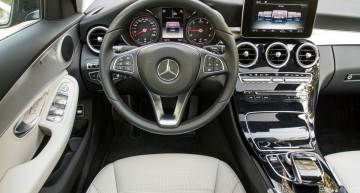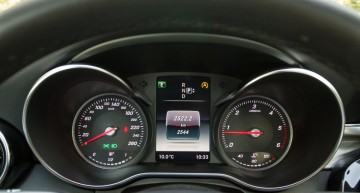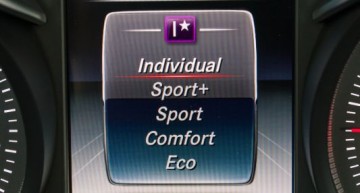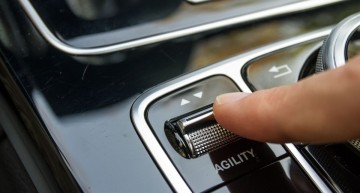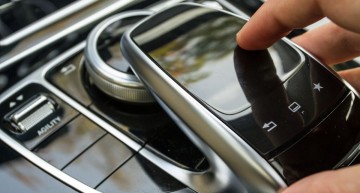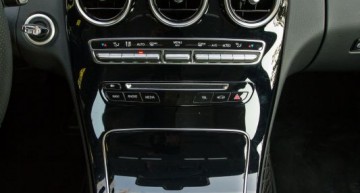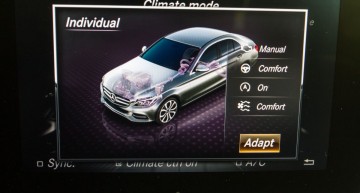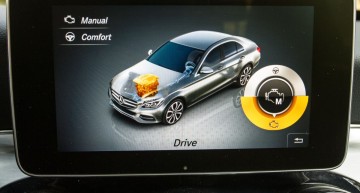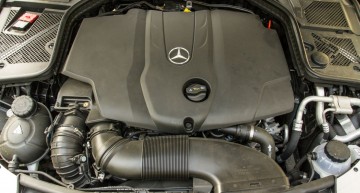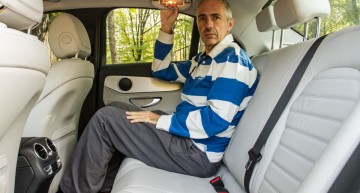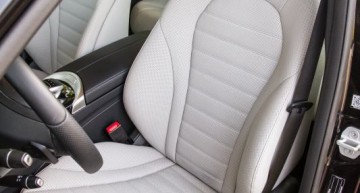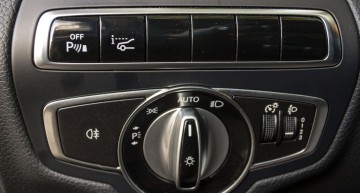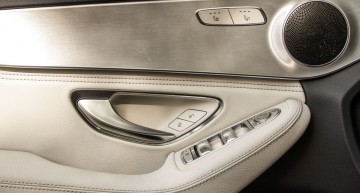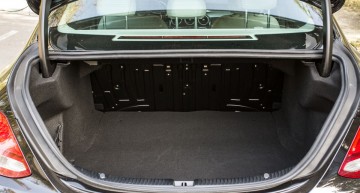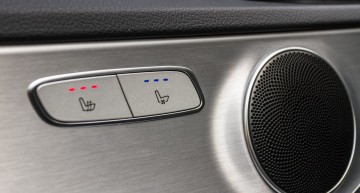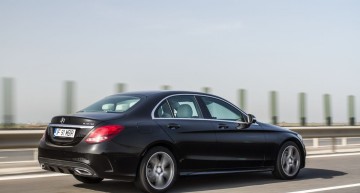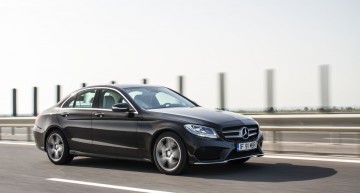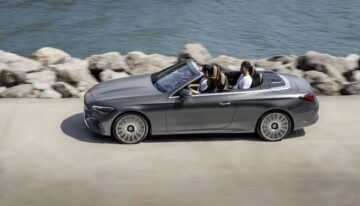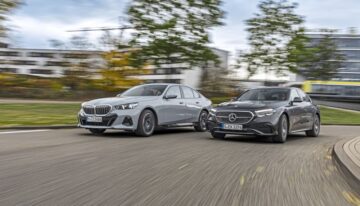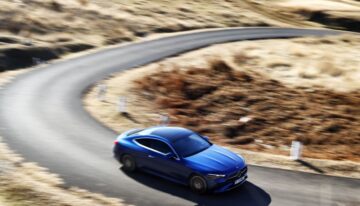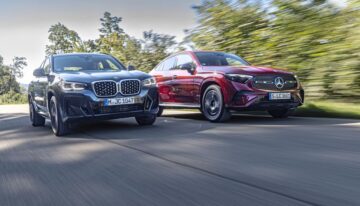Mercedes has tried to raise the comfort, safety and luxury standards of the middle range even higher, with the new C-Class. And the new rear wheel drive platform, making its debut in the C-Class, engages to more, regarding dynamics. The review of the C 220 BlueTec.
The C-Class is a crucial model for Mercedes, meaning the best selling model of the Mercedes range. That is exactly why the arrival of a new C-Class generation is a conclusive event for Mercedes.
At the launch, Mercedes executives said that the new C-Class is a smaller S-Class, but it is way more than that, because while the S-Class is built upon a modified platform of the former generation, the C-Class benefits from the new platform of the Mercedes brand, called MRA (Modular Rear Architecture). And this is not about an agressive marketing campaign, but about a brandnew technique.
With a 1570 kg kerb weight, the test car C 220 BlueTec is by 15 kg lighter than the former generation, although the body is by 95 mm longer, the safety standard has been upgraded and a lot of assistance systems, that were absent in the past, have come into existence. And the aerodynamics has been highly elevated even though, by objective reasons, in the AMG Sport line present on the test car (only the exterior package), there was no active grille of the radiator (the Mercedes badge is built in the grille). And together with the start&stop system, the turbo-diesel 2,1-liter and 170 HP engine, mated standard with a 7 speed automatic gearbox, promise an official fuel consumption after european cycle of 4.3 l/100 km. In real life, the figures were placed somewhere around 6-6,5 l/100 km, which are also pretty good for this class.
The very good aerodynamics goes hand in hand with the reduced noise level. Except for the diesel grumble in hard accelerations and under high load, the engine is almost perfectly quiet. The wind noise is low even at a speed of 140-160 km/h.
But the lighter body is not the only advantage of the new platform, but also the two innovations regarding the drive train. The multilink 4-arm front axle has completely changed the driving perception in a Mercedes. On quick bends, the car is more sharper, the trajectory precision is better, the understeering effect is dimminished and the traction reserves has been upgraded. A Mercedes has rarely been more agile in driving than the new C-Class, especially because the Direct Steer with variable power assistance provides an improved feedback.
The sports suspension lowered by 15 mm and the 17-inch AMG rims (standard for the AMG sports exterior package), favoring the dynamics. It is not the best resolution for the comfort, but for a sports suspension, it gives a reasonable compromise. Those who do wish more comfort, have the Avantgarde package on hand, with an adaptive comfort suspension lowered also by 15 mm and 17-inch rims or the pretty expensive Airmatic suspension, because it can only be purchased together with one of the exterior package lines, Avantgarde or Exclusive.
The driver has five driving programs at hand – Eco, Comfort, Sport, Sport+ and Individual, as he can separately adjust the steering, the engine response and the adaptive suspension, if he should order the Exclusive or Avantgarde package or the airmatic suspension.
The 2,1-liter turbodiesel engine has an honorable pulling force, as the maxium torque can be delivered by 1,400 rpm already and it stays consistent up to 2,800 rpm. From this point of view, it is a Mercedes-worthy engine, providing a performance measuring up to the class demands, apart from his new little 1,6-liter brothers hailing from Nissan, that are reccomended at the most for the fleet cars or for those coming close to the retirement age.
The power is also linearly and interfluently evolving and the engine is pleasant to use, as the ever-present torque disguises the indecision of the gearbox, while on downshifting and on coming out of bends.
However, we were expecting somewhat more from this engine, when it comes to refinement. Even though the engine compartment is well sealed, the typical diesel noise breaks through the cockpit, and under load, there are volume carmakers which have engines with a more pleasant sound.
In exchange to that, the interior is a high-class one. By comparison, the Audi A4 dashboard seems out-of-date, but let’s not forget that the model from Ingolstadt is already 7 years old and the BMW 3 Series dashboard seems insipid. By the interior of the new C-Class, Mercedes is proving what they know best – a luxurious interior, without making it glitzy.
- Refined inside ambience
- Highly upgraded dynamics
- High-class comfort
- Low noise level
- Very powerful and economical engine

MAX vs MIN
- Unrefined engine
- Space and access to the rear much inferior to those of the competition
- Rising ergonomics, but not at the level of iDrive.

Surprinsingly, the basic interior seems better ballanced than the one with glossy or mat wood inlays on the center console. Because the central ornament, which actually divides the dashboard into two parts and supports the free standing display is a flute-style aluminium copy, it does not fit in well, if the optional natural wood insert on the center console should be ordered. Unfortunately, the complicated shape of the central ornament on the dashboard did not allow the natural wood manufacturing.
That is why the flute-like aluminium of the central insert on the dashboard perfectly fits the standard glossy piano black color of the center console. The new multimedia system is a high-end one, more intuitive and has fewer control buttons than the former Comand generation, but surfing through the menus is not as intuitive as it is in the BMW iDrive.
At least in theory, Mercedes has judiciously used the extra length of the body. From the extra 95 mm in length, 80 mm of them are reserved to the wheelbase, as the C-Class has the longest wheelbase in the mid-size class, with a 2840-mm figure. But this very good figure does not retrieve into reality. The distance between the front and rear seats backrests is of only 695 mm, apart from the 740 mm in the Audi A4 or 790 mm in the new VW Passat. The seat cushion at the rear is shorter than that of the rivals and the narrower rear door limits the access to the rear seats. But at the front, you can seat quite well, as the driving position is low and comfortable.
Even the basic seats provide a very good support and are big. As a bonus feature apart from the rivals, the front seats come with a standard height and backrest electrical adjustment system.
As a matter of fact, the standard equipment line is very wide, as it includes the Attention Assist drowsiness detector system and Collision Prevention Assist (it automatically brakes up to 50 km/h, if a car is stopped in front or avoids the collision against a moving vehicle up to 40 km/h). The Driving Assist Plus package is optional and quite expensive, but it includes the Distronic Plus adaptive cruise control, which works together with the steering. The BAS Plus and Cross Traffic Assist systems are also optional.
Photo: Ovidiu Tăbăcaru
Verdict
Mercedes has done what it knows best: o luxurious high-end car, with a high-class interior, very comfortable and quiet. The C-Class is unexpectedly dynamic for a Mercedes. But we are expecting a more refined engine and the wheelbase augmentation does not run into reality.
| Model | C 220 BlueTec |
|---|---|
| Engine type | L4, turbodiesel |
| Displacement (cmc) | 2143 |
| Max.power/revs (CP/rpm) | 170/3000-4200 |
| Max. torque/revs (Nm/rpm) | 400/1400-2800 |
| Transmission | 7 sp., automatic |
| L/w/h (mm) | 4686/1810/1442 |
| Wheelbase (mm) | 2840 |
| Boot capacity (l) | 480 |
| Kerb weight (kg) | 1570 |
| Maximum speed (km/h) | 233 |
| Acceleration 0-100 km/h (s) | 7,4 |
| Combined fuel consumption (l/100 km) | 4,3 |
| Emission CO2 (g/km) | 109 |
| Price (euro with TVA) | 41.174 |

